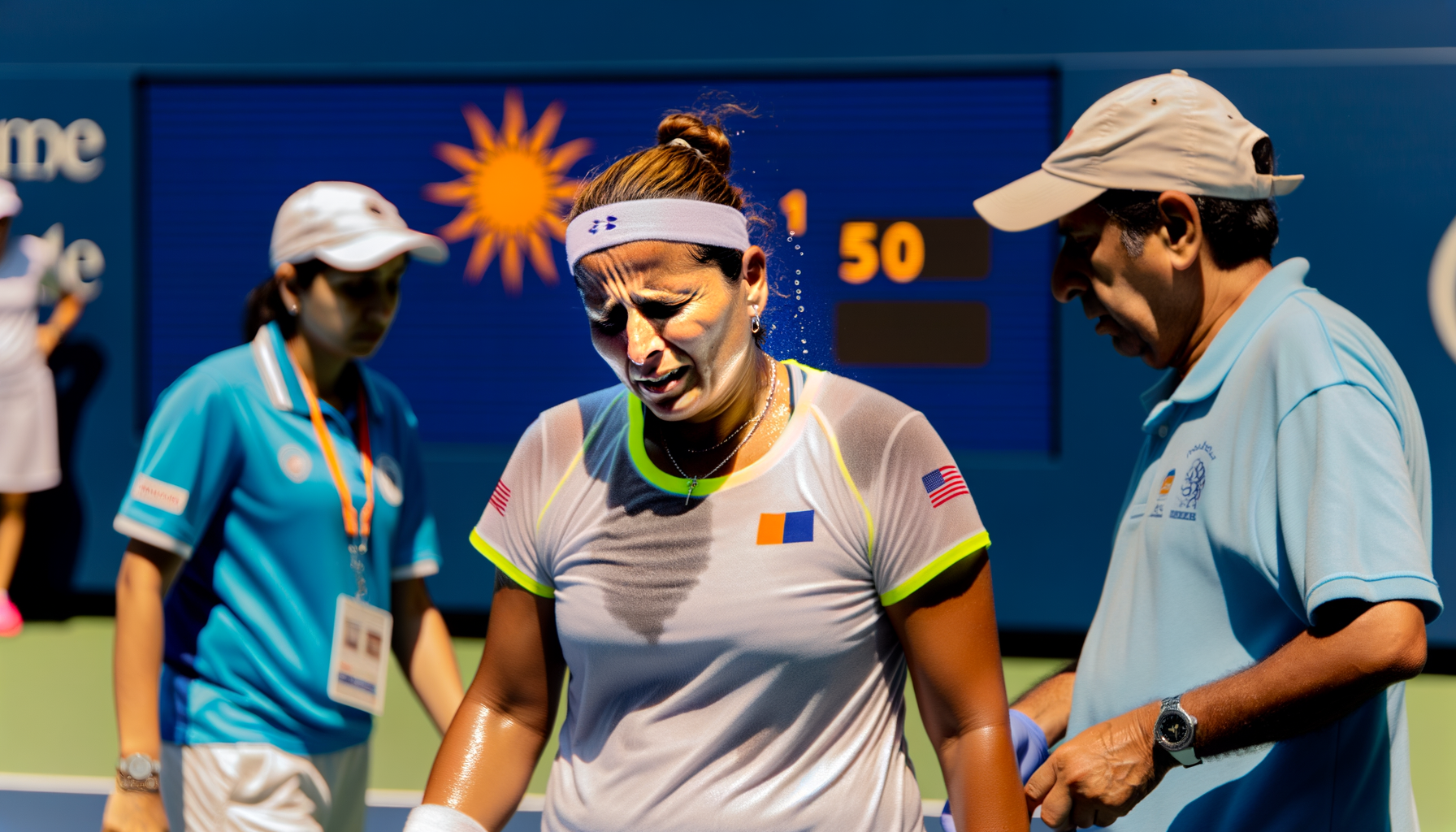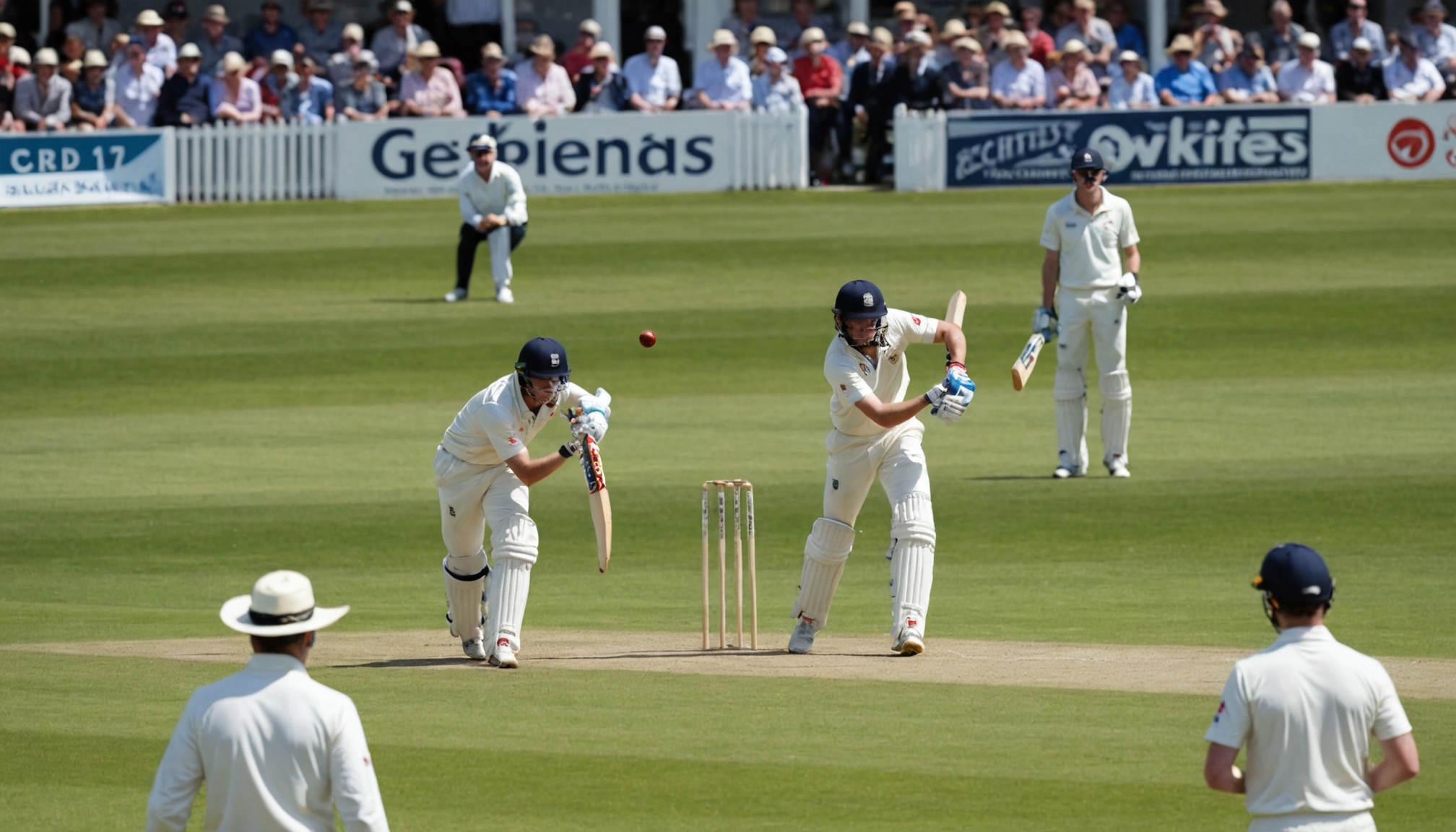Tennis And Extreme Heat: Player Safety In Focus
Explore how extreme heat impacts tennis players, current heat rules, and the urgent call for better safety measures at major tournaments worldwide.

By Editorial
The growing concern of playing tennis in extreme heat
Tennis players around the world face increasing challenges as soaring temperatures and humidity levels become a regular feature during major tournaments. Recent events such as the Shanghai Masters have highlighted the physical toll that heat can take on even the top athletes, sparking a vital conversation about player safety.
How heat affects tennis players physically and mentally
Human body temperature averages 37°C, but during intense physical exertion in hot conditions, players risk heat exhaustion. Symptoms like dizziness, muscle cramps, nausea, and breathlessness are common, escalating to dangerous heatstroke if not managed promptly. The body’s cooling mechanism, mainly sweating, leads to fluid and electrolyte loss, causing dehydration and impaired cardiovascular function. This results in lower blood pressure and increased strain on the heart.
For example, Holger Rune was visibly struggling at the Shanghai Masters, requiring medical attention and questioning the lack of a formal heat rule on the men's tour. Similarly, Emma Raducanu retired from the Wuhan Open due to dizziness, and Jelena Ostapenko cited heatstroke as the cause of her illness. These cases underline the urgent need for protocols to protect athletes.
Current heat rules and their limitations across tennis tours
Heat policies vary between the ATP and WTA tours, creating inconsistency in player protection. The Australian Open uses a Heat Stress Scale that can suspend play or enforce breaks when conditions reach critical levels. Women’s matches may receive a 10-minute break after the second set at high heat levels, but the men’s tour does not offer such breaks before deciding sets, leaving players exposed to prolonged stress.
The ATP currently leaves heat-related decisions to on-site supervisors in consultation with medical teams, lacking a formal, consistent heat rule. This contrasts with the WTA’s more structured approach where breaks are implemented based on a heat index. Novak Djokovic described recent conditions as "brutal," and rising player concerns suggest a shift towards prioritising health over tradition, as echoed by Rune’s call for an official heat policy.
Why do tournaments continue in extreme heat, especially in Asia?
The professional tennis calendar largely follows the sun, with tournaments scheduled to avoid the wetter autumn conditions typical in Europe and North America. October’s Asian swing, including events in China, Japan, and South Korea, offers reliable dry weather but often at the cost of extreme heat and humidity.
Outdoor courts are essential to accommodate large draws, particularly in 1,000-level events with up to 96 players. Indoor alternatives are limited, making it challenging to stage these tournaments without exposure to heat. While some indoor events occur earlier in the year or at the season’s close in Europe, the Asian swing remains predominantly outdoors.
The debate: survival of the fittest or player health first?
Traditionally, tennis has been seen as a test of endurance and mental strength, with players expected to endure tough conditions. However, the recent spate of heat-related retirements and medical interventions is prompting a reassessment. Should players be allowed to 'die on court' for the sake of competition, or is it time for comprehensive heat rules that prioritise health without compromising the sport's integrity?
Examples from other sports show how heat protocols can be integrated effectively. The ATP’s statement that "player safety remains a top priority" suggests that formal heat policies are under active review, but implementation lags behind player expectations.
Practical measures and recommendations for future tournaments
To enhance player safety, tournaments could adopt the following measures:
- Implementing mandatory heat breaks during matches when temperatures and humidity exceed threshold levels.
- Partial or full roof closures on show courts during peak heat, as practised at the Australian Open.
- Better scheduling to avoid midday heat, with more evening matches when temperatures drop.
- Improved hydration and cooling facilities courtside for rapid player recovery.
- Uniform heat stress indices applied across both ATP and WTA tours for consistency.
These actions would not only protect players physically but also improve the quality of play, reducing risks of sudden retirements or health emergencies.
Conclusion: Balancing tradition with modern player welfare
As tennis continues to evolve, so must its approach to environmental challenges. The ongoing dialogue around heat stress is a critical step in ensuring the sport remains competitive, fair, and above all, safe. Fans and players alike can benefit from policies that respect the rigours of the game while safeguarding health.
For those interested in broader sports topics, our Comprehensive Guide To UK Football Leagues And Teams offers an in-depth look at another major British sport, while our insights on how the BBC protects your data in sport polls and quizzes showcase the intersection of sport and technology.
Related topics
Editorial
Sports expert at SportsScoop
Specialist in sports analysis and journalism
Related articles
Want to read more?
Explore our comprehensive collection of sports articles and analysis, or contact us for more information.



